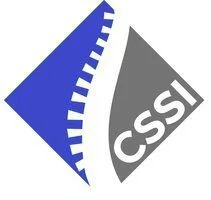Chiropractic Reduces Opioid Use by 55% in Low Back Pain
By Mark Studin
William J. Owens
A report on the scientific literature
In the United States, of the adults who were prescribed opioids, 59% reported back pain.1 According to Statistia, the percentage of adults in the United States in 2015 with low back pain was 29.1% (https://www.statista.com/statistics/684597/adults-prone-to-selected-symptoms-us/) and in 2017 that number was 49% for all back-pain sufferers reporting symptoms (https://www.statista.com/statistics/188852/adults-in-the-us-with-low-back-pain-since-1997/).
Peterson ET. AL. (2012) reported:
[The] Prevalence of low back pain is stated to be between 15% and 30%, the 1-year period prevalence between 15% and 45%, and a life-time prevalence of 50% to 80%” (pg. 525).
While acute pain is a normal (author’s note: pain is never normal) short-lived unpleasant sensation triggered in the nervous system to alert you to possible injury with a reflexive desire to avoid additional injury, chronic pain is different. Chronic pain persists and fundamentally changes the patient’s interaction with their environment. In chronic pain it is well documented that aberrant signals keep firing in the nervous system for weeks, months, even years. (http://www.ninds.nih.gov/disorders/chronic_pain/chronic_pain.htm)
Baliki Et. AL. (2008) stated
Pain is considered chronic when it lasts longer than 6 months after the healing of the original injury. Chronic pain patients suffer from more than pain, they experience depression, anxiety, sleep disturbances and decision-making abnormalities that also significantly diminish their quality of life (pg. 1398).
Chronic pain patients also have shown to have changes in brain function in sufferers with Alzheimer’ disease, depression, schizophrenia and attention deficit hyperactivity disorder giving further insight into disease states. In addition, chronic pain has a cause and effect on the morphology of the spinal cord and the brain resulting in a process termed “linear shrinkage”, which has been suggested to cause ancillary negative neurological sequella.
Apkarian Et. Al. (2004) reported that “Ten percent of adults suffer from severe chronic pain. Back problems constitute 25% of all disabling occupational injuries and are the fifth most common reason for visits to the clinic; in 85% of such conditions, no definitive diagnosis can be made.” (pg. 10410)
Whedon, Toler, Goel and Kazal (2018) reported the following:
One in 5 patients with noncancer pain or pain related diagnosis is prescribed opioids in office-based setting… primary care clinicians account for 50% of opioid prescriptions (Pg. 1). 1 day of opioid exposure carries a 6% chance of being on opioids 1year later, increasing to 13.5% by 8 days and 29.9% by 31 days. Among drug overdoses in the United States in 2014, 28,647, 61% involved an opioid. Opioids were involved in 75% of pharmaceutical deaths in 2010 and in 2015 over 22,000 deaths involved in prescription opioids were recorded-an increase of 19,000 deaths over the previous year (pg. 2).
Perhaps a portion of this phenomena is related to the training of medical primary care providers regarding musculoskeletal conditions. Studin and Owens reported (2016):
Day Et. Al. (2007) reported that only 26% of fourth year Harvard medical students had a cognitive mastery of physical medicine (pg. 452). Schmale (2005) reported “Incoming interns at the University of Pennsylvania took an exam of musculoskeletal aptitude and competence, which was validated by a survey of more than 100 orthopaedic program chairpersons across the country. Eighty-two percent of students tested failed to show basic competency. Perhaps the poor knowledge base resulted from inadequate and disproportionately low numbers of hours devoted to musculoskeletal medicine education during the undergraduate medical school years. Less than 1⁄2 of 122 US medical schools require a preclinical course in musculoskeletal medicine, less than 1⁄4 require a clinical course, and nearly 1⁄2 have no required preclinical or clinical course. In Canadian medical schools, just more than 2% of curricular time is spent on musculoskeletal medicine, despite the fact that approximately 20% of primary care practice is devoted to the care of patients with musculoskeletal problems. Various authors have described shortcomings in medical student training in fracture care, arthritis and rheumatology, and basic physical examination of the musculoskeletal system (pg. 251).
With continued evidence of lack of musculoskeletal medicine and a subsequent deficiency of training in spine care, particularly of biomechanical orientation, the question becomes which profession has the educational basis, training and clinical competence to manage these cases? Let’s take a closer look at chiropractic education as a comparison. Fundamental to the training of Doctor of Chiropractic according to the American Chiropractic Association is 4,820 hours (compared to 3,398 for physical therapy and 4,670 to medicine) and receive a thorough knowledge of anatomy and physiology. As a result, all accredited Doctor of Chiropractic degree programs focus a significant amount of time in their curricula on these basic science courses. So important to practice are these courses that the Council on Chiropractic Education, the federally recognized accrediting agency for chiropractic education requires a curriculum which enables students to be “proficient in neuromusculoskeletal evaluation, treatment and management.” In addition to multiple courses in anatomy and physiology, the typical curriculum in chiropractic education includes physical diagnosis, spinal analysis, biomechanics, orthopedics and neurology. As a result, students are afforded the opportunity to practice utilizing this basic science information for many hours prior to beginning clinical services in their internship.
Whedon, Toler, Goel and Kazal (2018) continued:
